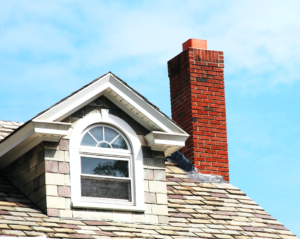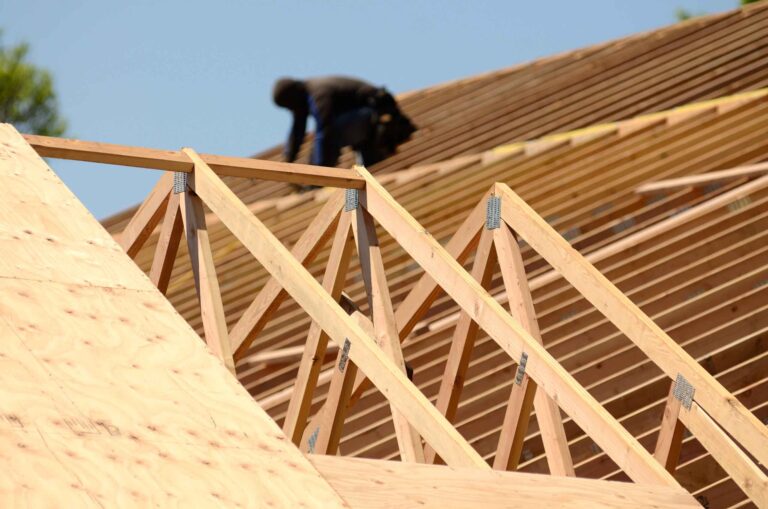No one thinks about roof leaks until, well, their roof is leaking. Don’t panic! It’s probably been leaking for months – you’re just now noticing. My advice is to not call the first roofing listing you find; instead, seek out referrals and do a little research.
As with anything in life, knowledge is power. Perhaps this article will shed a little light on the darkness that is ignorance, and you’ll be empowered to make wise decisions going forward.
Here are the 9 most common roof leaks:
1. Bathroom Boots
Those white PVC pipes protruding through your roof above kitchen or bath fixtures — they allow your plumbing waste lines to operate properly. The “boot” is the portion roofers’ install to create a watertight seal around the pipe. In time, especially on south facing slopes, the rubber seals can “dry rot”. They will crack and split, eventually deteriorating completely in the worst cases. It may take months, even years, but sooner or later you’ll see water stains. The stains typically appear on the kitchen or bath ceiling near the wall that contains the plumbing.
Boot replacement cost range from $70 -$200 per boot. *
2. Chimney leaks

Chimneys can leak for a myriad of reasons. In fact, chimney construction is so varied that very few roofers have the depth of experience needed to know how to properly roof them. I have roofed hundreds if not thousands of different chimneys. Whether brick, stone, stucco, metal, or vinyl — chimneys usually leak because of poor workmanship.
The majority of chimney roof leaks originate at one of the corners of the chimney. A corner leak is often due to improper flashing and roofing as several materials are brought together to transition around the chimney.
Also common are counter-flashing leaks. Counter-flashing is the metal you see from the ground. It wraps the chimney, overlapping the step flashing at the roof level, and is cut and bent into the brick along its top. Counter-flashing most often leaks because it has not been properly sealed or attached.
Another common chimney leak are masonry leaks. If you have a leak that no one has been able to stop, you’ve likely got a masonry leak. The masonry work can absorb water like a sponge if it has not been properly sealed. Even if the roofing work is superb and the counter-flashing beautifully done, a masonry leak will run behind it all. Often noticed as wet brick and mortar with little or no damage to paint or drywall.
Complete chimney tear-out, re-roof and all new flashing including the application of a compatible masonry sealer… costs typically range from $300 – $1000. Note: using an incompatible masonry sealer can severely damage your shingles.
3. Valley Leaks
A valley is created when two (or three) roofs intersect creating a low point between adjacent roof slopes. Water, of course, will naturally funnel down valleys; therefore, extra precautions are needed to ensure that leaks do not develop. Unfortunately, many roofers are poorly trained and will not invest in the extra material and time to properly roof valleys. The result is predictable… valley leaks. Valley leaks can be difficult to locate exactly. Often the valley will be leaking in more than one location, but typically leaks occur along the lower half of the valley, especially the valley base. Repairs can be extensive and challenging.
Complete valley tear-out and re-roof costs typically range from $300-$700.
4. Blown-off Shingles

Today’s shingles, especially quality dimensional shingles, rarely “just” blow-off. I have never been called back for blown-off shingles. Ever.
Based out of Murfreesboro, TN, we have seen many severe storms, including high winds, hail, and tornados. Of course, a direct hit from a tornado will not only remove shingles but also the house itself. However, shingles should not just fly off normally even in a bad storm. The primary reason shingles are lost is due (yet again) to poor workmanship. Usually, the shingles were not properly fastened to the roof deck. It is not the number of nails, but rather the location and depth they have been driven that is most important.
Hot shingles are surprisingly soft. Too many roofers fail to adjust their air guns or lower the air compressor tank pressure to compensate for less shingle impact resistance. Compounding the problem is the fact that many roofers drive their nails too high missing the critical nail line, which is designed to be thicker and to catch the top of the shingle below.
The next most common cause of blown-off shingles is using lightweight, poor quality shingles that lack an adequate tar/cement seal. Finally, shingles can be lost due to age. As shingles age, they become more and more brittle and their seals gradually deteriorate and lose their flexibility and strength. A quality roof should not begin this process until it is at least twenty years old.
Blown-off shingle cost can range from $80 to full roof replacement.
5. Low Slope Leaks
Most residential roofs do not have low slopes, which I define as less than a 4″(rise) x 12″(run). However, the majority of roofs that do have low slopes leak prematurely.
The reasons for low slope failures are many. Water will find a way, if a way is presented. Many roofers will roll out the red carpet and usher water right into your living room. Rock solid low slope solutions require commercial products. The problem is that a vast majority of roofers lack commercial roof experience. It is the blind contractor leading the blind chief roofer followed by a bunch of blind Indians. Added to this is the added material expense and planning required to have the needed material ready when the work is underway. Repair cost can be substantial.
Low slope repair cost range from $100 to thousands of dollars.
* All repair cost depend on the type of materials, roof slope, location on the roof, extent of the repair, and many other factors therefore pricing is best reflected as a price range but could be more or less than the ranges provided.
6. Vent Boots
Roof vents are the small objects that look like pipes, protruding from the top of many roofs. Their purpose is to get rid of moisture that’s accumulated inside of one’s home. Much like bathroom boots, another common leak explained above, the flashing on vent boots can crack and deteriorate over time.
7. Ice Dams

Luckily in Middle Tennessee, we don’t have to worry much about the accumulation of snow for more than a few days. That being said, I’ll still talk about ice dams, another common cause of roof leaks throughout the United States.
An ice dam is ice that forms at the edge of a roof in winter weather. This traps snow on the roof, leading to ponding water and improper drainage. When snow begins to melt, the majority of it has nowhere to go and this can put a great deal of stress on any roof. Additionally, ice is heavy and the weight of these dams has a negative impact as well. One way to combat ice dams is to purchase a roof rake and remove a few feet of snow from your roof’s edges. Be sure to seek the help of a professional if need be — in many cases this can be a challenging task.
The repair cost for damage due to an ice dam will vary depending on the severity of damage, roofing materials, and other external factors.
8. Skylight Leaks
Skylight leaks are easy to pinpoint. If a skylight on your home was improperly installed you will notice the accumulation of moisture around it and may even experience water dripping into your home. There are two common causes of this leak — the measurements for you skylight may have been incorrect upon installation or the material used for insulation has been compromised over time. In some cases, your skylight may be in need of a flashing repair. Before jumping to conclusions on what the problem may be, check the skylight window for cracks.
9. Leaks Caused by Clogged Gutters

A leak may not have anything to do with the actual construction of a roof itself, but rather with a home’s gutters — the mechanism that’s put in place to help a roof drain properly. If your home’s gutters are clogged and dirty, rainwater will have nowhere to go. This leads to pooling water, which can cause damage to any part of a roof, as it will eventually seep its way into its cracks. To avoid roof damage, be sure to clean your gutters regularly, or contact us to help you with the job.
The repair cost for damage due to pooling water and clogged gutters will vary depending on the severity of damage, roofing materials, and other external factors.
About The Author
Joseph Dowell has operated a roofing company based out of Murfreesboro, TN for over twenty years. Dowell Roofing services Rutherford County (including Murfreesboro, Smyrna, and Lavergne) as well as surrounding Middle Tennessee counties. To learn more visit www.DowellRoofingTN.com.








